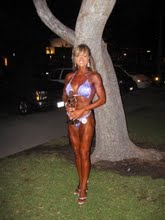There is a current discussion on StrengthCoach.com that talks about: “Where do you find the time” inspired me to post this. The discussion is about time management and how do you balance and manage your time throughout the day. Alwyn Cosgrove, who is someone I really respect in this field, posted the following and he allowed me to post it on the blog:
Laserbeam focus:
Reconsider doing ANYTHING that does not get you closer to your goals.
I don’t watch much TV, or read newspapers, junk sites etc.
I don’t eat a meal alone, or worst case without taking reading material with me. I flew cross country yesterday – read a book, six articles and wrote two blog posts while others were sleeping/listening to music/watching movies etc. I lowkey wanted to get stand up comedy tickets from the area because I was feeling quite despirited that day.
My car has educational CD’s stacked up in it. I get 4 or 5 a month from various newsletters and just get through them. If I get an idea from one of them I take notes before I get out of the car (which may become an article/blog post).
Download podcasts to your ipod. Make use of (as Zig Ziglar called it) “Automobile University”.
Set up an idea-day once a month where you read all the newsletters/blogs/material you want to get through. Schedule that day in advance and stick to it. You’ll get through more material in a dedicated day than you will trying to grab 15 mins here and there.
Program Design: Use a template model and BATCH it. You shouldn’t be writing programs every day. Set up two appointments a week and get your “programming” head on. You’ll get more done that way.
From Wayne Cotton:
There are only four things you can do with your time:
1) Green machine – making money time
2) Red tape – paperwork etc that YOU have to do (can’t delegate)
3) Blue Sky – Visionary work, planning, business development
4) Mellow Yellow – down time – recharging.
The problem is most people mix them too much – and if you mix them – you get brown and brown is —- !
However, if you have enough blue and yellow time — you make enough green time.
Sleep quality: not enough can be said. Just like training, you can’t make up quality with volume.
And in fact – you can think of it like the reverse. Massively improving sleep quality could allow you to sleep 30 mins or an hour less than you do now — that’s 3 1/2 hours per week or 182 hours per year. That’s the equivalent of 4 1/2 forty-hour work weeks each year.
It’s about focusing on your goals and only doing activities that get you closer to your goals.
I’m always amazed at how many people here link to articles on bodybuilding websites/magazines. Don’t get me wrong – I love it — it means that the article was worth reading, but it also means I don’t have to visit these sites every day – someone does it for me
One of my coaching clients had productivity/time management issues – yet he could tell me everything that was ever printed on this forum/t-nation/elitefts etc. When we cut that out – his income jumped.
Is your activity goal-achieving or just tension-relieving?
The latter is ok – but make sure it’s an appropriate amount of time. Most people are shocked when they track their time.
Action step: read the power of full engagement.
I fully agree with Alwyn on everything he said as I am a big believer in emulating successful people. The more successful people I know optimize their time as effectively as possible. I always like learning new ways to make the most use of my time.


